Behind the scenes of creating Mazda's paper craft cars
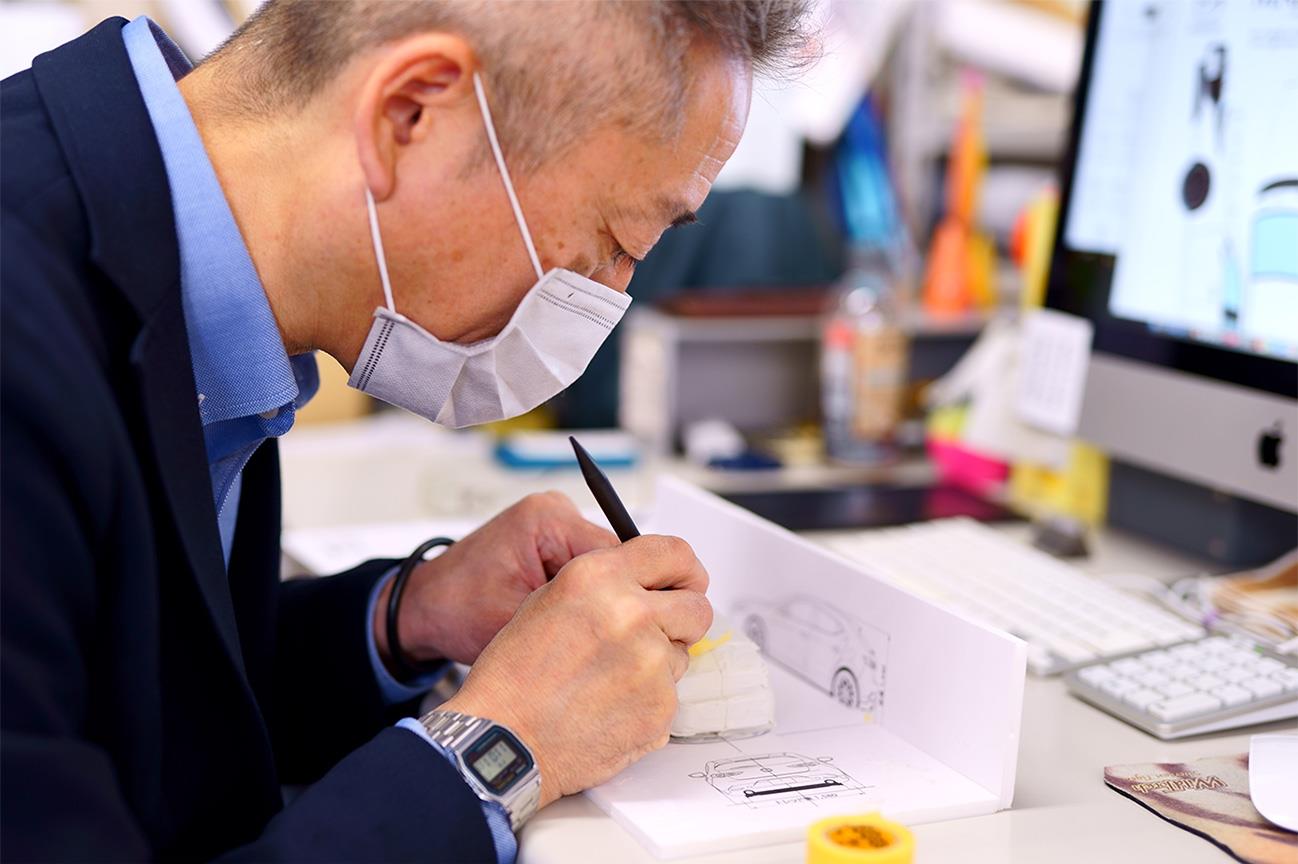
Alongside the CX-3, CX-5, MX-5, Mazda2, and Mazda3, paper craft versions of the nostalgic Cosmo Sport, R360 Coupe, Luce, and Familia, as well as three colored versions of the Mazda3 (Launched in 2019), complete this impressive lineup.
Following their debut eight years ago, Mazda's paper craft cars have been enjoyed around the world. But do you know how they are created?
One of Mazda's designers and a specialist designer from outside the company collaborate to develop these ingenious models.
This is Mazda designer Yoshihiro Hatakeyama.
Originally an exterior designer, He is a pro at developing models.

Mizmakobo Co., Ltd.* designer Eiji Miyamoto is pictured at the top of the page. He studied sculpture in university and is a professional modeler.
* Mizmakobo Co., Ltd. is an ad agency established in Hiroshima City in 1945.
The process for developing the paper crafts is quite similar to that of actual vehicles: planning, development, production, provision to customers.
The first step is planning, beginning with ideas such as "A new model will be released soon, so let's make a paper craft version" and "Let's make a special paper craft for the 100th anniversary." The wish that more children would come to like cars and that they could enjoy monotsukuri through the paper crafts is the root motivation for the planning process.
The next step after planning is development. Miyamoto-san from Mizmakobo Co., Ltd. creates the first draft, and Mazda's Hatakeyama checks it. Surprisingly, Miyamoto-san creates his first draft out of clay!
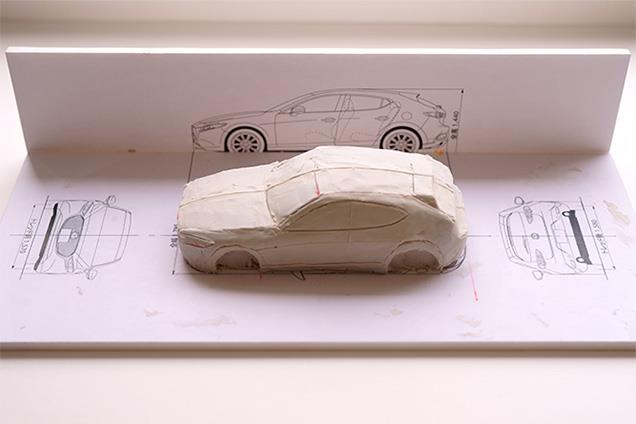
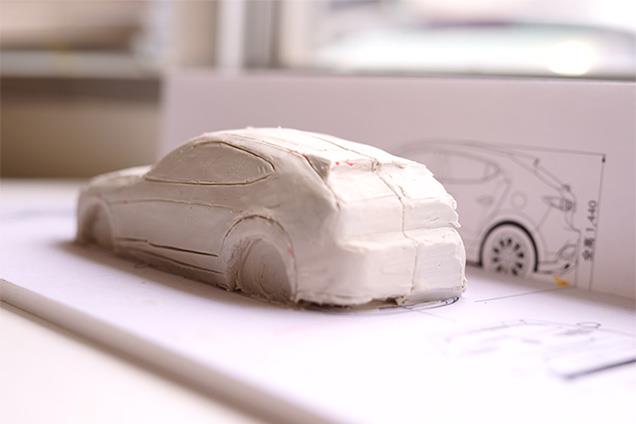
Since he studied sculpture in university, Miyamoto-san values being able to work in three dimensions and closely replicate the shape of the actual car. When he can't find particular details in Mazda's catalog or website, Miyamoto-san hits the streets to photograph his subjects in real life. He says he relies on his senses as he began creating his designs.


Following repeated communication to settle on a final draft that both designers were satisfied with, the process finally moves into the production stage. That's when the data and printouts for customers and fans are created.
The two designers work together to develop Mazda's paper craft cars.
They said three main points are important for them to achieve through the development process.
The first is "We want many children to make these paper crafts."
In order to achieve this goal, first they make sure the design would be easy and safe to build. Furthermore, they leave the cars' body as a blank canvas, so that children can enjoy coloring it in as they like and creating the kind of car they want to ride in the future. The two designers hope the paper crafts will inspire more and more children to like cars. (By the way, Hatakeyama loved drawing monsters when he was little and also drew cars when he was in late elementary school.)

The second point important to the designers is for the paper crafts to clearly embody Kodo Design.
They aim for the paper crafts to embody the beauty of Kodo Design and the vitality expressed through curves, so that not only children but Mazda fans of all ages could be happy with how the completed paper car looks. For example, in order to achieve the smooth rear curves of the Mazda3, the designers repeatedly tested and redesigned how to bend the paper to achieve a beautiful effect. They say the look of even a single model can change dramatically depending on how the flat surfaces are handled. They even asked for feedback from the chief designers of the actual cars in order to improve the paper versions.
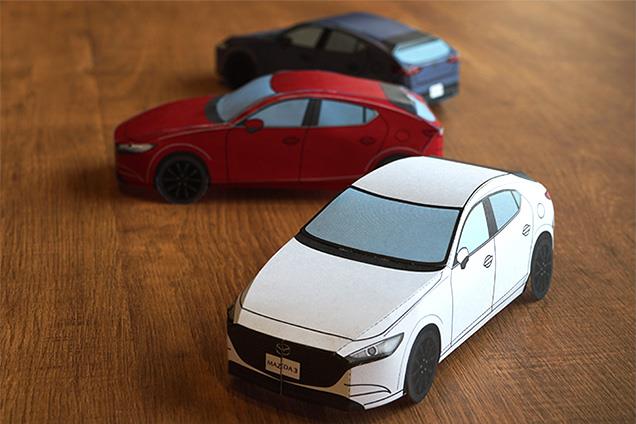
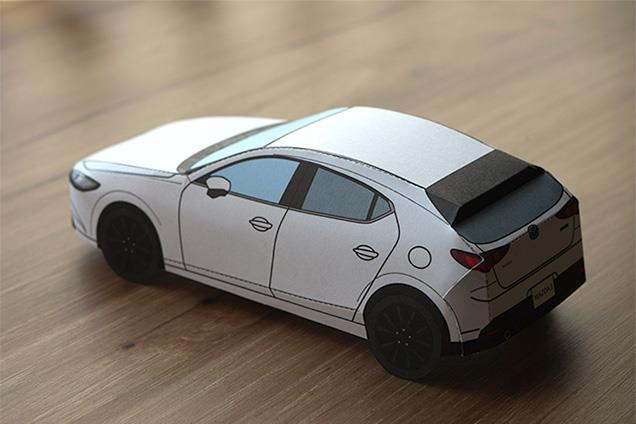
The third point is that they want anyone who builds a paper craft car, whether child or adult, to be able to get lost in monotsukuri.
They say they want users to experience becoming completely engrossed in something enjoyable. Paper crafts contain great hidden potential for developing creativity through the process of building a three-dimensional object from a single piece of paper. For example, try thinking from the stance of a clay modeler as you construct the little car: "Gluing the roof and body together makes the paper car feel stiff, so how can the curved surfaces be expressed most beautifully? What if I tried wrapping the paper into a cylinder?"
It's really fun when your head is filled with ideas you want to try, isn't it?
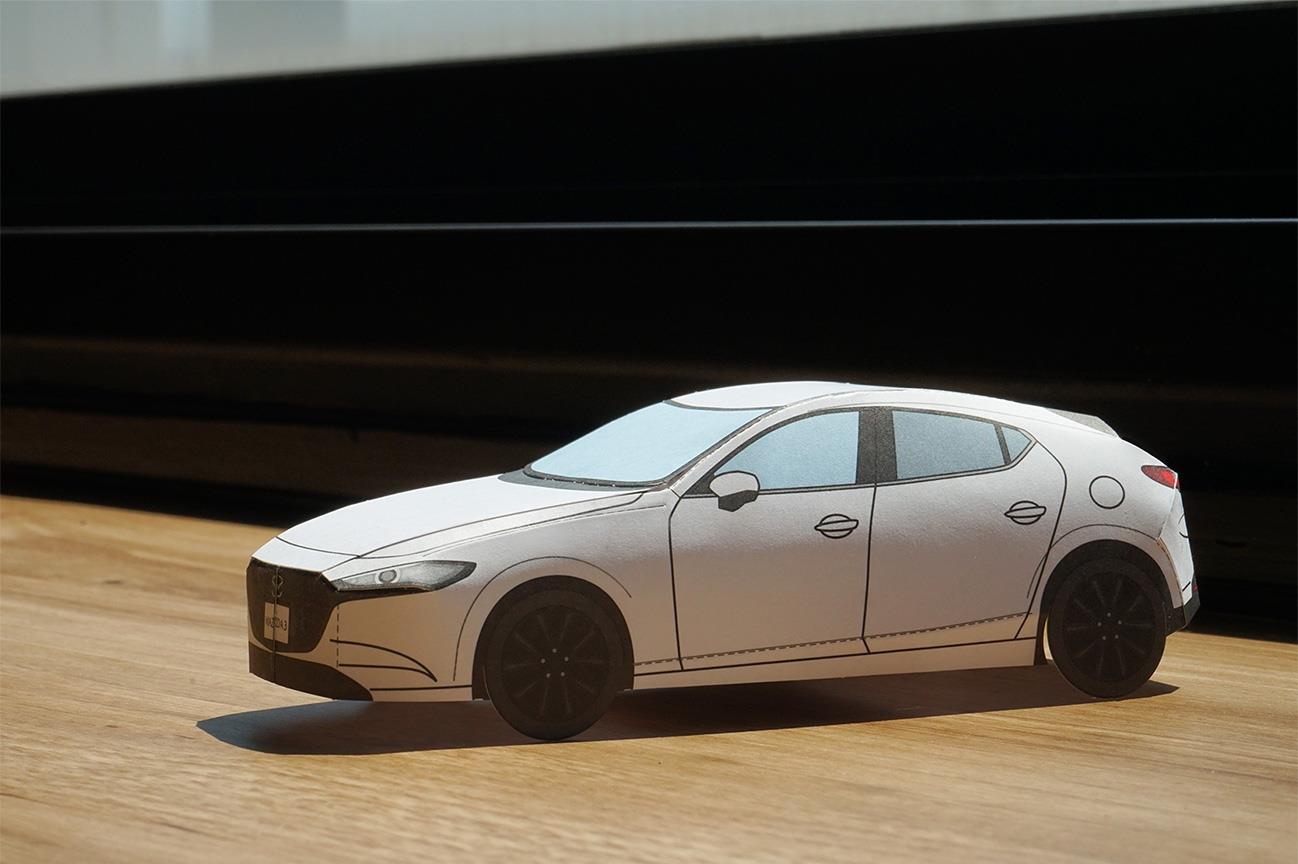
The two designers were smiling as they talked, revealing their inner challenger spirit and unflagging efforts. It was clear that they create the paper crafts with passion and sincerity. Mazda will continue providing this activity, so that children all over the world can experience the joy of monotsukuri and feel a sense of accomplishment.
Tips for assembling paper craft cars
Miyamoto-san: The paper will bend well if you make a groove with a dried-up ballpoint pen along the places you fold. I recommend printing the designs on paper that's a little thicker and stiffer than normal copy paper.
Hatakeyama: The curves lose their great shape if you use too much glue, so use just a little and hold the area down with your finger while you let it dry. The curves look best when molded gently by hand.
Finally, here are some paper craft cars made with love by our friends. We hope you will try making your own too.

Prize-winning entry in the 2016 Mazda2 paper craft original design contest

Prize-winning entry in the 2017 Mazda2 and MX-5 paper craft original design contest
